Learning guitar chords can be an exciting journey, but some chords, like the F major chord, can feel like hitting a brick wall, especially for beginners. If you’ve been struggling with the F chord, you’re definitely not alone. Many guitarists find it challenging, sometimes even discouraging enough to make them consider giving up. But don’t let the F chord defeat you! It’s a hurdle that every guitarist faces and overcomes.
The difficulty with the F chord arises from the barre technique it requires. A barre occurs when one finger presses down multiple strings at once. In the standard F chord, your index finger needs to cover several strings simultaneously, demanding hand strength and finger coordination that develops over time.
However, the good news is that mastering the F chord is absolutely achievable, and there are ways to make it easier, especially when you’re just starting out.
In this guide, we’ll break down two versions of the F major chord:
- The Full Barre F Chord: This is the more common, and often more challenging, version. We’ll provide tips to make it more manageable.
- The Easier F Chord (Small Barre): A beginner-friendly alternative that sounds great and allows you to play songs without the frustration of the full barre immediately.
Whether you’re aiming to conquer the full barre F chord or prefer starting with the easier version, this guide will provide you with the techniques and insights you need.
If you’re brand new to guitar, feel free to skip directly to the easier F chord version below and come back to the full barre later.
Why is the Full Barre F Chord So Difficult?
The full barre F chord is notoriously challenging for beginners primarily because of the strength and dexterity required to execute a clean barre. Let’s delve deeper into the mechanics of why this chord can feel so awkward at first:
- Finger Strength: Pressing down multiple strings with one finger, especially across the guitar’s fretboard, demands significant finger strength. Beginner guitarists often haven’t yet developed the necessary muscle strength in their fretting hand to consistently create a clear sound across all strings in a barre chord.
- Finger Placement and Precision: Barre chords require precise finger placement. Each string needs to be pressed down just behind the fret to ring out clearly without buzzing. Achieving this consistently with the index finger across multiple strings takes practice and fine motor control.
- Hand Position and Leverage: The position of your hand and thumb on the neck of the guitar plays a crucial role in generating leverage for barre chords. Finding the optimal hand position that provides enough pressure without excessive strain is key to playing the F barre chord comfortably and effectively.
- Coordination: Beyond the barre finger, the other fingers need to fret specific notes within the chord shape while avoiding muting other strings. Coordinating all fingers to work together smoothly in the barre chord shape requires practice and muscle memory development.
It’s important to remember that these challenges are normal. Every guitarist, from your favorite rock star to your guitar teacher, has gone through the same initial struggles with barre chords like the F major. Consistent practice and the right techniques are the keys to overcoming these hurdles.
How to Play the Full Barre F Chord
Let’s break down how to play the full barre F major chord, step-by-step, with tips to make it more accessible.
Here’s a chord diagram illustrating the full barre F chord:
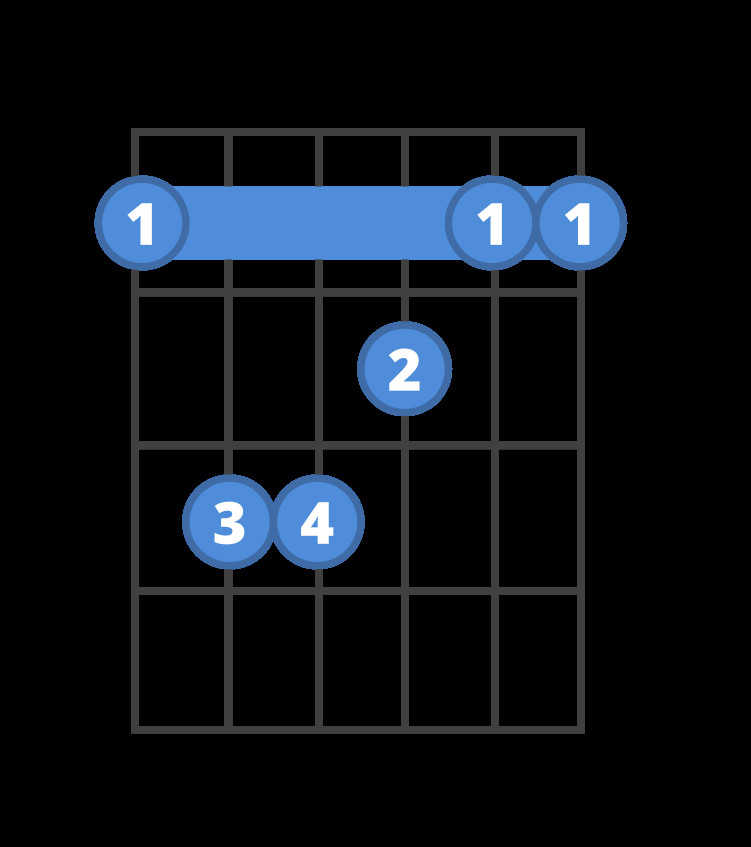 Chord diagram for the F guitar chord.
Chord diagram for the F guitar chord.
As you can see in the diagram, your index finger (finger 1) acts as the barre, pressing down all six strings at the 1st fret. Your other fingers then form the rest of the chord shape.
Here are detailed tips to help you play the full barre F chord more effectively:
Key Techniques for a Clear F Barre Chord
Drawing inspiration from expert guitarists, here are crucial techniques to focus on:
1. Targeted Pressure: Focus on the Key Strings
Notice in the chord diagram that while your index finger spans all six strings, you primarily need to ensure firm pressure on the 1st (high E), 2nd (B), and 6th (low E) strings. These are the strings that need to ring out clearly for the F major chord. Don’t exhaust yourself trying to press down the middle strings with maximum force; concentrate your pressure where it matters most.
2. Finger Curvature: Arch Your Fingers Correctly
Especially with your middle (finger 2), ring (finger 3), and pinky (finger 4), ensure they are nicely curved. This curvature is essential to prevent them from accidentally muting adjacent strings. The goal is to use the tip of your finger to press down on the string, not the flat pad where your fingerprint is.
3. The “Hold an Egg” Hand Position: Create Leverage
Imagine you’re holding an egg in the palm of your fretting hand. This visualization encourages the correct hand position. Your thumb should be positioned on the back of the guitar neck, opposite your middle and ring fingers. This creates space in your palm and provides optimal leverage, making it easier to clamp down on the strings with your index finger. This leverage is crucial for barre chords.
4. Fret Proximity: Snuggle Up to the Frets
Observe how close your fingers, particularly your index finger in the barre, are to the fret just behind the one you are fretting. Fretting close to the fret requires less pressure to produce a clean sound. If you’re struggling with buzzing, try moving your fingers slightly closer to the guitar body, nearer to the fret.
By concentrating on these techniques – targeted pressure, finger curvature, hand leverage, and fret proximity – you’ll find playing the full barre F chord becomes significantly more achievable.
# The Easier F Chord (Small Barre)
If the full barre F chord feels too challenging right now, don’t get discouraged! There’s an easier version of the F chord, often called the “small barre F chord,” that’s perfect for beginners. It sounds excellent and is a fantastic stepping stone to the full barre. You can even continue using this version indefinitely if it suits your playing style!
Here’s how the easier F chord looks:
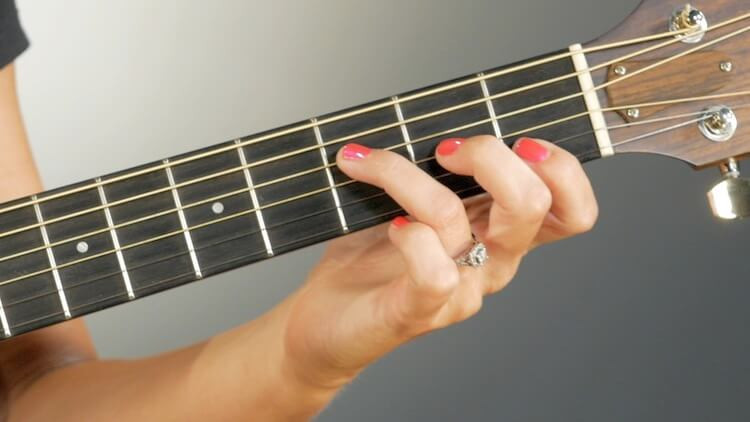 Image of the easier F chord (small barre).
Image of the easier F chord (small barre).
In this version, your index finger only bars the thinnest two strings (1st and 2nd string) at the first fret. The rest of your fingers complete a simplified F chord shape.
Here’s the chord diagram for the easier F chord:
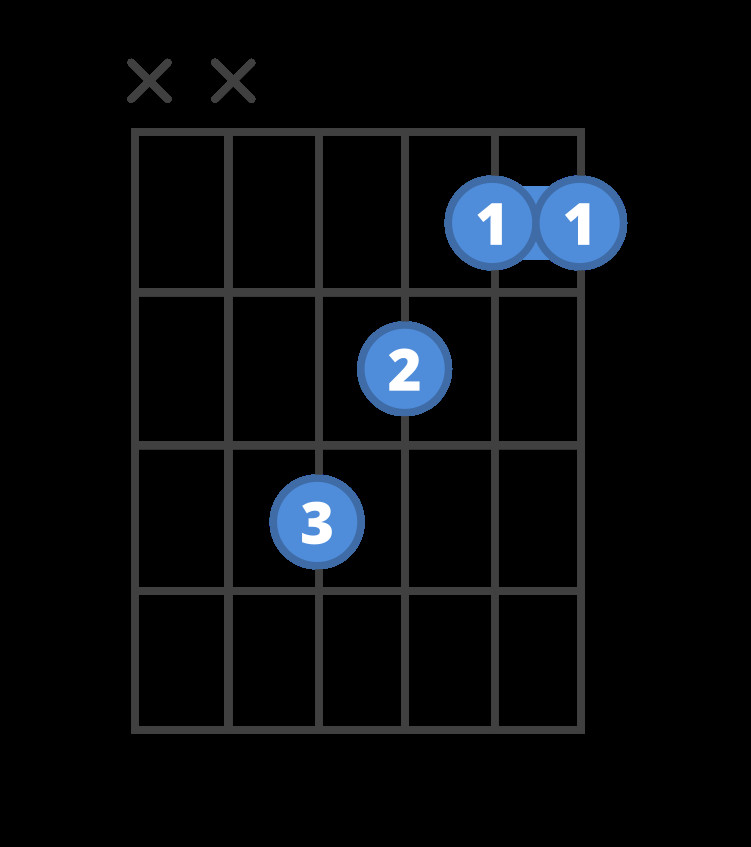 Chord diagram for the easier F guitar chord.
Chord diagram for the easier F guitar chord.
If you’re unfamiliar with chord diagrams, you can learn how to read chord diagrams here.
Step-by-Step Guide to the Easier F Chord
Let’s break down the easier F chord into simple steps:
-
Index Finger Placement (Small Barre): Take your index finger and lay it across the thinnest two strings (1st and 2nd – high E and B strings) just behind the 1st fret. Make sure both strings are pressed down cleanly.
-
Middle Finger Placement: Place your middle finger on the 3rd string (G string) at the 2nd fret.
-
Ring Finger Placement: Place your ring finger on the 4th string (D string) at the 3rd fret.
-
Strumming: For this easier F chord, only strum the thinnest four strings (from the D string down to the high E string). Avoid strumming the two thickest strings (E and A strings). A good technique is to rest your pick or strumming finger lightly on the 4th string before strumming downwards to ensure you only hit the correct strings.
Crucially, this easier barre F chord version works because you are intentionally not playing the thickest two strings.
Tips for Mastering the Easier F Chord
Even though it’s easier, these tips will help you play the small barre F chord cleanly and efficiently:
1. Maintain Finger Arching
Just like with the full barre, keep your middle and ring fingers arched. Ensure that only the tips of these fingers are pressing down on the strings to avoid muting adjacent strings. “Leave no fingerprints!” is a good reminder for finger tip precision.
2. Fret Proximity for Ease
If you hear buzzing, adjust your finger position to be closer to the fret just behind the one you’re fretting. Being closer to the fret requires less finger pressure to get a clear sound.
3. String Awareness: Strum Only Four Strings
Always remember to strum only the thinnest four strings for this version of the F chord. Accidentally including the thicker strings will muddy the sound and not produce the desired F major chord voicing.
# Further Learning and Practice Resources
Ready to take your F chord skills to the next level? Here are resources to help you practice and master the F chord and barre chords in general.
Barre Chord Video Lessons
Do barre chords still seem intimidating? They don’t have to be! There are excellent video lessons available that can demystify barre chords once and for all. Look for video series that cover:
- Essential Barre Chord Shapes: Learn the fundamental barre chord shapes that form the basis of many chords.
- Fretboard Navigation: Understand how to move barre chord shapes up and down the fretboard to play different chords.
- Chord Changes: Practice smooth transitions between barre chords and other chord types.
- Buzz Elimination: Get expert tips on eliminating fret buzz and achieving clean barre chord sounds.
Learn Barre Chords with Video Lessons
Smart Practice with ChordBank Tools
To make practicing the F chord more engaging and effective, consider using practice tools like ChordBank (if you have access to it, as referenced in the original article). These tools can offer:
- Smart Flashcards: Interactive flashcards that listen to you play and automatically advance as you correctly play chords.
- Practice Games: Gamified exercises that make chord practice fun and help build muscle memory through repetition and engagement.
Chord Combinations for Practice
Here are some effective chord combinations to practice the F chord in context and improve your chord transitions:
1. F, C, and Am (Same Finger Focus)
This combination is excellent for beginners using the easier F chord. Focus on keeping your index finger anchored on the 2nd string, 1st fret (for the easier F), and concentrate on moving your middle and ring fingers to form the C and Am chords.
F
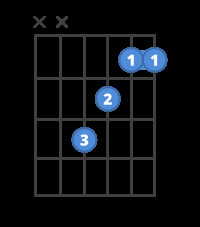 Chord diagram for the easier F guitar chord.
Chord diagram for the easier F guitar chord.
C
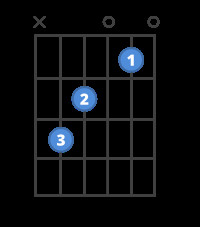 Chord diagram for the C guitar chord.
Chord diagram for the C guitar chord.
Am
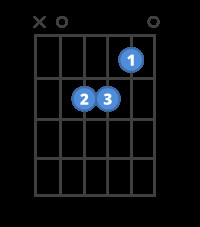 Chord diagram for the Am guitar chord.
Chord diagram for the Am guitar chord.
Practice F, C, and Am with Flashcards
2. C, F, and G (Common Chord Progression)
C, F, and G are among the most frequently used chords in popular music. Mastering transitions between these three is fundamental. This practice will require you to move your entire hand between chord shapes, including finding the F chord shape each time it appears in the sequence.
C
 Chord diagram for the C guitar chord.
Chord diagram for the C guitar chord.
F
 Chord diagram for the easier F guitar chord.
Chord diagram for the easier F guitar chord.
G
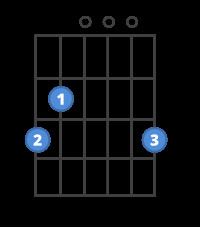 Chord diagram for the G guitar chord.
Chord diagram for the G guitar chord.
Practice C, F, and G with Flashcards
3. F, Dm, Am (Minor Key Practice)
This combination introduces minor chords alongside the F major, helping you develop your ear for chord quality and expand your chord vocabulary in a minor key context.
F
 Chord diagram for the easier F guitar chord.
Chord diagram for the easier F guitar chord.
Dm
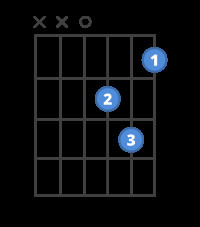 Chord diagram for the Dm guitar chord.
Chord diagram for the Dm guitar chord.
Am
 Chord diagram for the Am guitar chord.
Chord diagram for the Am guitar chord.
Practice F, Dm, and Am with Flashcards
Gamified Practice
Make practice even more fun with guitar practice games! Tools like ChordBank offer games that respond to the chords you play via your device’s microphone.
-
ChordPOP!: Play chords to fire darts and pop balloons. Practice F, Am, C, and Dm in a game format.
Play ChordPOP! -
EmojiHunt: Play chords to fill in the blanks in a word game. Practice F, D, and C while expanding your vocabulary.
Play EmojiHunt
Conclusion: Persistence Pays Off
The F chord, whether the full barre or the easier version, is a fundamental chord in guitar playing. While the full barre F chord can be initially challenging, especially for beginners, with consistent practice and the right techniques, it becomes manageable and eventually second nature.
Start with the easier F chord version to get comfortable and begin playing songs sooner. As your hand strength and dexterity improve, gradually work towards mastering the full barre F chord.
Remember, every guitarist has faced this challenge. Persistence, combined with smart practice strategies and helpful resources, will lead you to successfully playing the F chord and unlocking a vast repertoire of songs. Keep practicing, and enjoy the journey of learning guitar!
About the Author:
Anna Freitas (link to: http://annafreitasguitar.com/) holds a B.A. from Berklee College of Music and is a performing guitarist and vocalist in New England. She is dedicated to guitar education, teaching students both in person and online.

